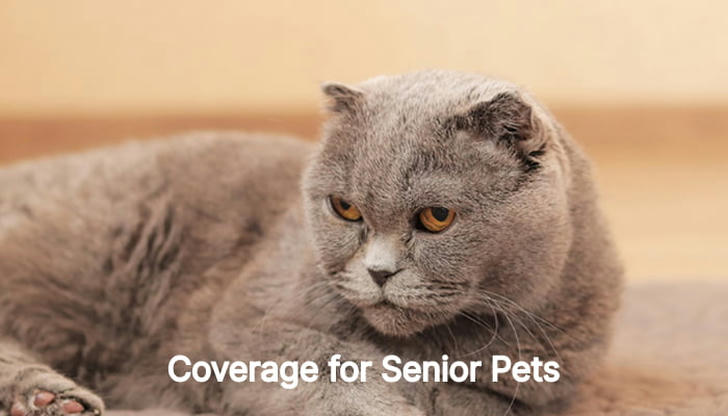Pet Insurance for Older Pets: What You Need to Know About Coverage for Senior Pets

As our beloved pets grow older, their healthcare needs often increase—and so do the associated costs. Whether it’s arthritis, heart disease, or unexpected accidents, senior pets are more vulnerable to health issues that can lead to expensive veterinary bills. That’s why pet insurance for older pets is no longer a luxury—it’s a smart and compassionate choice for pet owners who want to ensure their furry companions enjoy a healthy and comfortable life in their golden years.
In this guide, we’ll walk you through why pet insurance is essential for older pets, what kind of coverage to expect, and how to choose the right plan that actually meets your needs.
Why Older Pets Need Insurance

Aging pets—usually those 7 years or older—face a significantly higher risk of developing chronic or age-related conditions, including:
Arthritis and joint pain – leading to reduced mobility and quality of life.
Kidney and liver disease – common in older cats and dogs.
Cancer – one of the leading causes of death in senior pets, with treatment often costing upwards of $5,000.
Heart disease – especially prevalent in certain breeds and often requiring lifelong medication.
Cognitive dysfunction – similar to dementia in humans, requiring both behavioral and medical management.
According to recent veterinary data, the average annual medical cost for a senior dog or cat can range from $800 to $2,500, and that’s without major surgeries or emergency care.
Without insurance, these costs can put a serious strain on household finances, sometimes forcing pet parents into heartbreaking decisions. A solid insurance policy can provide much-needed financial support when it matters most—allowing you to focus on care, not costs.
Can You Still Get Pet Insurance for a Senior Pet?

Yes, you can—but the window narrows with age. While many pet insurance providers do offer coverage for older pets, there are a few key things to watch out for:
Enrollment age limits – Some insurers cap new enrollments at 10-12 years of age, depending on species and breed.
Waiting periods – Coverage often starts after a 14-30 day waiting period, so don’t wait until a health issue appears.
Pre-existing condition exclusions – Conditions diagnosed or treated before policy activation typically won’t be covered.
Higher premiums – As with human health insurance, the older the pet, the higher the monthly cost.
If your pet is already a senior, it’s still worth getting coverage—but you’ll need to compare policies carefully and act quickly.
What Does Pet Insurance Typically Cover for Seniors?

Coverage varies by provider and plan tier, but most pet insurance policies for senior pets include:
✔️ Accidents and Injuries
Broken bones, sprains, poison ingestion, or accidents caused by reduced mobility.
✔️ Illness Treatments
Covers a wide range of age-related illnesses like diabetes, urinary tract infections, or even cancer, depending on the plan.
✔️ Diagnostic Testing
X-rays, MRIs, blood tests, ultrasounds—vital tools for catching issues early.
✔️ Surgeries and Hospitalization
Whether it’s a tumor removal or emergency surgery, these are often the biggest ticket expenses.
✔️ Medications and Chronic Care
Long-term medication for arthritis, heart disease, or thyroid issues can add up quickly. Many plans help offset these recurring costs.
✔️ Specialty and Alternative Care (in premium plans)
This includes physical therapy, acupuncture, hydrotherapy, and laser treatments—great for managing chronic pain and improving mobility in older pets.
What’s Usually Not Covered?
It’s crucial to understand what insurance won’t cover, to avoid surprises:
Pre-existing conditions – Anything diagnosed before the policy starts is typically excluded for life.
Routine care – Vaccinations, dental cleanings, and flea/tick treatments aren’t included unless you buy a wellness add-on.
Breeding or pregnancy-related care – Often excluded across most plans.
Cosmetic or elective procedures** – Like tail docking or nail trimming.
Always read the full policy and ask providers to clarify anything you’re unsure about. Look for a provider with clear and transparent terms—no hidden exclusions.
How to Choose the Right Pet Insurance for Your Senior Pet
Finding the right plan isn’t just about cost—it’s about value, reliability, and coverage that actually works. Here are five practical steps:
✅ 1. Don’t Wait Too Long
The earlier you insure your pet, the better. Younger seniors (7–9 years old) will have lower premiums and fewer exclusions. If your pet is already older, act now—waiting only reduces options.
✅ 2. Compare at Least 3 Providers
Use comparison tools or read recent reviews. Look into claim processing time, customer service, reimbursement speed, and coverage for chronic conditions. Some popular providers for seniors include Healthy Paws, Embrace, and Fetch by The Dodo.
✅ 3. Prioritize Chronic Condition Coverage
Older pets are more likely to need long-term care. Make sure the policy covers ongoing treatment for conditions like arthritis, thyroid issues, or heart disease.
✅ 4. Understand the Reimbursement Model
Some plans pay a fixed amount per incident, while others reimburse a percentage of your vet bill (usually 70%–90%). Choose one that fits your budget and risk tolerance.
✅ 5. Check for Annual or Lifetime Limits
Policies may cap how much they’ll pay each year or over your pet’s lifetime. Look for a plan with high or unlimited annual limits if you want better peace of mind.
Final Thoughts: Give Your Pet the Care They Deserve
Aging is inevitable—but suffering doesn’t have to be. Senior pets bring joy, loyalty, and unconditional love into our lives. In return, we owe them the comfort, health, and care they need as they grow older.
Pet insurance for older pets isn’t just a financial decision—it’s an emotional investment in your pet’s well-being. By choosing the right plan and provider, you’re giving your companion the best possible support in their later years—without compromising your savings or peace of mind.
